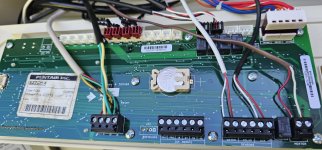It looks like the flowchart just says to confirm 24v between "24 VAC" and Grnd... and only to check to make sure IND is wired correctly. Being I haven't changed any wiring and it worked before, I will have to assume wiring is fine. I've checked for 24v between "24 VAC" and Grnd. We're good there. So that seems to lead me down to jumping F1 and F2 together to confirm the blower works. And from there, if it does, it says to replace the Fenwal.Looking at the chart it may be voltage on IND and not FN that tells the Fenwal to start the blower. Check for 24V on IND as the chart asks.
I'll let you know tomorrow what the outcome of that test is. Thanks again for your patience and help!!!!





